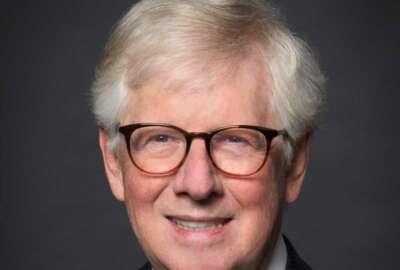
Feds as cheap (easy?) dates
Politicians are promising federal workers a big pay raise in January. But Senior Correspondent Mike Causey says feds can be cheap dates in an election year.
Politicians anxious to court federal workers and retirees have an inexpensive way to do it:
Ignore them for as long as possible. Then when a really big election year (presidential and congressional) rolls around, like now, get busy. Propose a big pay raise that will get lots of attention without any hope of actually getting to second base. Or maybe even first.
No harm. No foul.
It’s the thought the pols hope, that counts.
Like now.
After supporting or going quiet on the 3- year federal pay raise freeze, Democrats in Congress are now leading the charge for a 5.3 percent raise in January 2017. They say the 1.6 percent recommended by President Barack Obama in his final budget is too little, too late. And that the 1.3 percent feds finally got this year is almost insulting.
Some of the last-minute pay converts are sincere. Rep. Gerry Connolly (D-Va.) has consistently supported higher pay for his fed-packed district. So have Maryland’s retiring Democratic Senator Barbara Mikulski and House Minority Whip Steny Hoyer (D-Md.). And Rep. Chris Van Hollen (D-Md.). Again from the Maryland suburbs. But many of the Democrats who now said feds must have a decent and long-overdue pay raise were AWOL when the White House proposed a 2-year freeze (and sequestration) and Congress stretched it to 3 years.
The upside of the Mission Impossible 5.3 percent federal pay proposal for 2017 is that it will (they hope) make Republican candidates (who really don’t need any help) look less attractive to fed family voters. Most of them, also preoccupied with reelection and either holding or taking the House and Senate, have ceased knocking feds, and their pay and benefits, for the duration of this campaign.
There is no evidence that federal workers vote as a bloc, although unions sometimes hint at it in hopes of making their endorsements more meaningful. To the person who gets the endorsement.
When asked about their political leanings, most feds say they probably tend to vote like their neighbors. That California based feds are different from their colleagues in Texas. Or Vermont. Others say their jobs or agency mission plays a big role. Genia who works for the Air Force in Texas says she is very different politically from her sister, who recently retired from the Environmental Protection Agency. Among other things, they have very different views on climate change and what can be done about it. “She drives a Prius,” Genia said, “I drive a Buick. What does that tell you?” Plenty!
Whether feds are bloc voters or not, there are a lot of them. And all are old enough to vote.
The active-retired federal community is huge in key states — Texas, Florida, California, Pennsylvania, Ohio, New York and, of course, Maryland and Virginia. Lots of voters in North/South Carolina, Georgia, Missouri, Colorado, Washington state, and Utah are current or former feds. Some are Red, some are Blue. But given the choices in this one, the outcome is anybody’s guess. Feds leave a giant voter footprint in Oklahoma and Pennsylvania, which has an important, and complicated primary coming up next week.
While the “fight” for a bigger 2017 raise will be pressed — at least through early November — veterans of similar election-year surges recommend you don’t spend the money just yet.
Nearly Useless Factoid
In his autobiography, Snoopy, Charlie Brown’s dog, writes that he was one of eight puppies born at the Daisy Hill Puppy Farm on “one bright Spring morning.”
Source: Wikipedia
Copyright © 2025 Federal News Network. All rights reserved. This website is not intended for users located within the European Economic Area.
Mike Causey is senior correspondent for Federal News Network and writes his daily Federal Report column on federal employees’ pay, benefits and retirement.
Follow @mcauseyWFED





